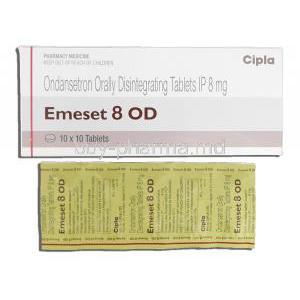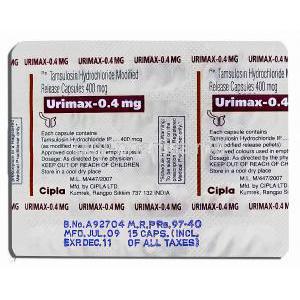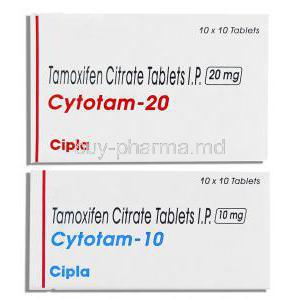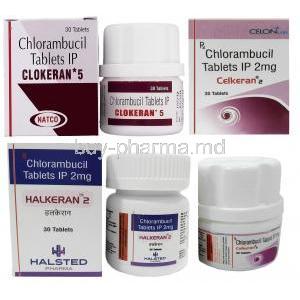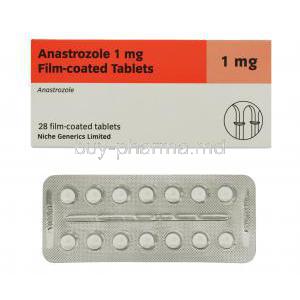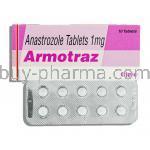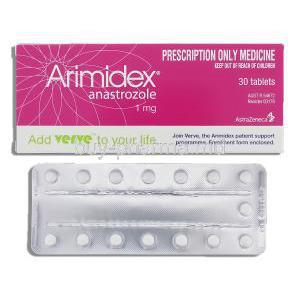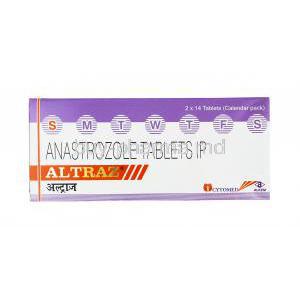Dactinomycin
- Introduction to Dactinomycin
- Uses of Dactinomycin
- How Dactinomycin Works
- Off-label Uses of Dactinomycin
- Dosage and Administration
- Composition of Dactinomycin
- Common and Uncommon Side Effects
- Interactions with Other Drugs
- Warnings and Important Precautions
- Contraindications for Dactinomycin Use
- Careful Administration Considerations
- Special Populations: Dosage and Precautions
- Overdosage of Dactinomycin
- Storage Considerations
- Handling Precautions for Healthcare Professionals
Introduction to Dactinomycin
Historical context and discovery
Dactinomycin, also called Actinomycin D, was initially extracted from the bacterium Streptomyces in the 1940s. Being one of the anti-cancer drugs to be found, it played a crucial role in advancing cancer treatment research. Its arrival marked an achievement in chemotherapy and opened doors for more focused approaches to treating cancer.
Primary molecular structure and characteristics
Dactinomycin, as an antibiotic, acts at this level. It has a structure consisting of a central phenazone core ring and two cyclic pentapeptides on either side. This specific arrangement allows Dactinomycin to insert itself into DNA and interfere with the production of RNA in cells.
Uses of Dactinomycin
Approved therapeutic uses
Dactinomycin is a drug that has been approved by the FDA to be used alone or with other drugs to treat various types of cancer including Wilms tumor, Rhabdomyosarcoma, Ewing sarcoma, and solid tumors that are locally recurrent 1. It is also used as palliative and/or adjuvant therapy in adults with testicular cancer and in children whose nonseminomas have metastasized (spread to other parts of the body) 1.
In combination therapy, Dactinomycin often works together with anticancer drugs to enhance the effectiveness of the treatment. This combined approach sometimes allows for dosages of individual drugs, which can potentially reduce side effects 1.
Here are some references that provide more information about Dactinomycin:
- National Cancer Institute. Dactinomycin1
Mechanism in tumor shrinkage and cell growth inhibition
Dactinomycin primarily works by attaching to guanine residues in DNA. This attachment hinders transcription, reducing RNA synthesis and ultimately impeding protein synthesis. Dactinomycin effectively restrains the growth of tumors by focusing on the building blocks of cell reproduction.
How Dactinomycin Works
Molecular action: binding to DNA and disruption
Dactinomycin has a property as a chromopeptide that enables it to fit in between the base pairs of DNA. When it gets intercalated, it disturbs the structure of the DNA helix, which in turn hinders the RNA polymerase enzyme from progressing along the DNA strand during transcription.
Impact on cell cycle and replication
Dactinomycin blocks the synthesis of RNA, which prevents cells from moving in the G1 and G2 phases of the cell cycle. As a result, they cannot enter the S phase, where DNA replication takes place. This interruption in the cell cycle leads to a pause in cell growth. It may potentially trigger programmed cell death.
Off-label Uses of Dactinomycin
Potential areas of therapeutic exploration
Dactinomycin is primarily used in oncology to treat various types of cancer including Wilms tumor, Rhabdomyosarcoma, Ewing sarcoma, and solid tumors that are locally recurrent 1. However, its DNA-binding properties have spurred interest in other therapeutic areas such as antiviral treatments and autoimmune disorders 2.
It is important to note that Dactinomycin’s cytotoxic nature requires judicious consideration before venturing into these domains 2.
Here are some references that provide more information about Dactinomycin:
- National Cancer Institute. Dactinomycin1
- DrugBank Online. Dactinomycin: Uses, Interactions, Mechanism of Action2
Clinical studies supporting off-label applications
There have been clinical trials that have delved into investigating the potential uses of Dactinomycin beyond cancer treatment. Some studies have suggested that it may be effective in conditions like lupus erythematosus. However, we still need conclusive data and broader acceptance in the medical community before it can be widely adopted for these purposes.
Dosage and Administration
Recommended dosages may vary depending on the type of malignancy, patient factors, and whether Dactinomycin is used in combination therapy. Typically, doses range from 0.045 to 0.07 mg/kg/day for conditions. Dactinomycin is usually administered intravenously and requires careful attention during administration due to its potent cytotoxic effects. Adjustments to the dosage may be necessary based on factors such as renal or hepatic function, age, and concurrent use of other medications.
Composition of Dactinomycin
Chemical constituents
Dactinomycin consists of a group of compounds, all comprising the same chromophore. However, these compounds differ in their peptide side chains. Its empirical formula is C62H86N12O16.

Stability factors and additives
Dactinomycin is quite sensitive to solutions and needs particular stabilizing agents when it is in a solution. Some preparations may include additives such as mannitol and sodium chloride.
Common and Uncommon Side Effects
Frequently observed reactions
Patients taking Dactinomycin may frequently encounter the following side effects: Feelings of nausea and vomiting, Hair loss, Development of mouth sores, and Decreased blood cell counts.
Rare but serious side effects
Although rare, there are some reactions that can occur, such, as liver toxicity, severe skin reactions, and lung toxicity. It is essential to seek medical attention if any of these symptoms appear.
Monitoring for and managing side effects
Conducting laboratory tests, including complete blood counts and liver function tests, is crucial. Depending on the side effects' severity, treatment dosage adjustments, symptomatic management, or even discontinuation may be required.
Interactions with Other Drugs
Known drug-drug interactions
Dactinomycin may interact with medications, including live vaccines, other chemotherapy agents, and specific anticonvulsants. In some cases, adjustments to the dosage or the consideration of alternative therapeutic approaches might be necessary.
Potential risks with over-the-counter medications and supplements
Using Dactinomycin at the same time as certain over-the-counter medications, such as aspirin or supplements, like St. Johns's Wort could potentially worsen its side effects or diminish its effectiveness in treatment.
Warnings and Important Precautions
Recognizing early signs of toxicity or adverse reactions
If you notice decreases in blood counts, a yellowing of the skin, or unusual difficulty breathing, it's essential to seek immediate medical attention. Staying alert to these symptoms can help prevent serious complications.
Necessary lab tests and follow-ups during treatment
Regular blood tests, including blood counts and liver function tests, are essential. Ongoing clinical assessments can determine how effective the medication is and identify any harmful effects.
Contraindications for Dactinomycin Use
Absolute contraindications
Dactinomycin should not be used in patients with a known allergy or sensitivity to the medication or its ingredients.
Relative contraindications and risk assessment
Before administering Dactinomycin, it is essential to analyze the risks and benefits, especially in cases of severe liver damage or ongoing infections.
Careful Administration Considerations
Special patient populations: renal or hepatic impairment
Monitoring and considering potential dose adjustments in patients with impaired kidney or liver function is crucial.
Dietary and lifestyle considerations during treatment
Ideally, it is recommended for patients to avoid consuming alcohol and to be cautious when consuming foods to minimize the risk of infection. Maintaining a balanced diet and ensuring proper hydration can assist in managing specific side effects.
Special Populations: Dosage and Precautions
Administration to Elderly
Adjusting the dose based on age; It may be necessary to reduce the dose for patients due to changes in their body's ability to process and eliminate drugs. Being aware of side effects related to age; It is essential to closely monitor for side effects that may be more pronounced in older individuals. This includes being vigilant, about complications related to the heart or kidneys.
Administration to Pregnant Women and Nursing Mothers
It is essential to be aware of the risks and possible birth defects associated with Dactinomycin as it can harm the fetus. Therefore it is not recommended to use this medication during pregnancy. Although there is data available, studies suggest potential risks may be associated with Dactinomycin during pregnancy and breastfeeding. Therefore nursing mothers should also avoid using this medication due to the possibility of its presence in breast milk.
Administration to Children
Regarding the recommended dosage for children, it's essential to consider their weight. However, we should exercise caution since children may have responses to medications. While the safety profile of drugs in children is generally similar to that of adults, it's worth noting that some side effects might appear differently in children. Therefore, close monitoring is crucial.

Overdosage of Dactinomycin
Recognizing symptoms of overdose
An excessive dose of Dactinomycin can result in symptoms. Because it significantly affects processes, these symptoms can affect multiple organ systems. It is essential to be aware of signs, including Severe suppression of bone marrow function, which can lead to an increased vulnerability to infections, anemia, and bleeding—intensified gastrointestinal symptoms like severe nausea, vomiting, and inflammation of the mucous membranes. Acute liver dysfunction is characterized by jaundice and elevated liver enzymes. Recognizing these indicators of an overdose is crucial to prevent complications.
Immediate interventions and management steps
When someone experiences an overdose, it is crucial to take action. These steps include: 1. Stopping the administration of Dactinomycin. 2. Providing care such as managing fluids and electrolytes and treating specific symptoms. 3. Monitoring the patient closely in a hospital setting with attention to hematological (blood), renal (kidney), and hepatic (liver) parameters. 4. Seeking guidance from a toxicologist or oncology specialist for personalized advice. 5. It's important to remember that there is no antidote for Dactinomycin, so management primarily focuses on providing support. Remember that these interventions are necessary in cases of overdose and should be carried out promptly under supervision.
Storage Considerations
Optimal storage conditions
To ensure the effectiveness of dactinomycin, it is essential to store it due to its complex molecular structure. Here are some guidelines for maintaining its stability: Store at a controlled room temperature, between 20°C and 25°C. Avoid exposing it to direct sunlight, as this can degrade the molecule. Do not. Refrigerate the reconstituted solution. By following these storage conditions, we can ensure that the drug maintains its desired properties.
Stability and shelf-life
When stored in the recommended conditions, Dactinomycin has a shelf life. Generally, unopened vials can remain stable until the expiration date specified by the manufacturer. After reconstitution, it's best to use the solution, although some preparations may stay stable for a few hours. However, it's always wise to follow the guidelines provided by the manufacturer.
Handling Precautions for Healthcare Professionals
Safe preparation and administration
When working with agents like Dactinomycin, it's essential to be cautious and skilled. To ensure preparation and administration, follow these steps: 1. Wear protective equipment such as gloves, gowns and eye protection. 2. Use a biological safety cabinet or laminar airflow hood when reconstituting the agent. 3. Avoid creating aerosols and ensure all syringes and vials are adequately sealed. 4. Always double check. Routes of administration to prevent any accidental errors. Following these handling protocols is crucial for the safety of the patient and the healthcare professional involved.
Disposal and spillage protocols
Considering the cytotoxicity of Dactinomycin, it is crucial to handle its disposal and any spillage with the utmost caution. Here are some essential steps: 1. wear personal protective equipment. 2. Use absorbent pads or materials to manage any spills. 3. Clean the area where the spill occurred using detergent and plenty of water. 4. Dispose of all contaminated materials in a designated waste container, including gloves and pads. 5. Regularly inspect storage areas for leaks or damage. By following these protocols, we can protect the environment. Minimize the risk of accidental exposure to others.


